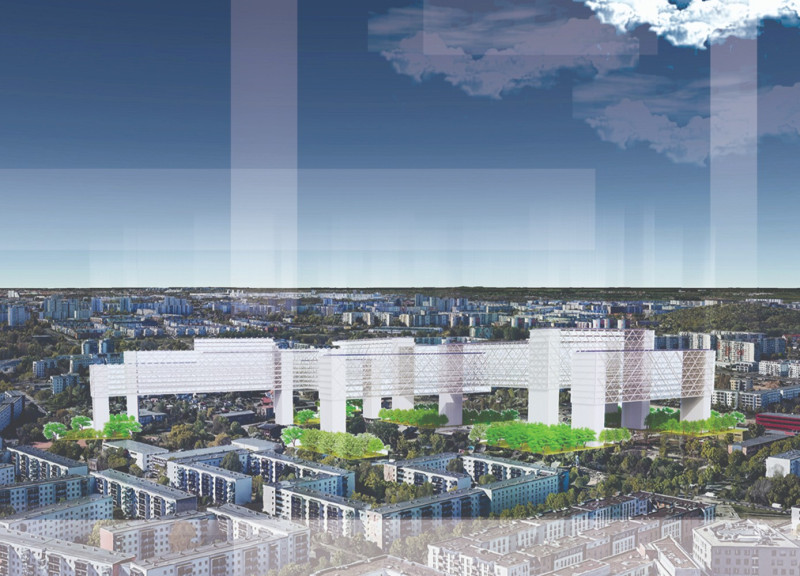5 key facts about this project
Affordable Housing Without Ground (Dwelling in the Sky) is located in the Heidersdorf and Lichtenberg districts of Berlin. The design aims to solve urban housing challenges by using vertical space to limit reliance on high land prices. The concept focuses on creating affordable living environments while ensuring functionality and incorporating sustainable practices in the urban setting.
Vertical Housing Strategy
The project employs a vertical housing strategy to reduce the need for traditional land use. By stacking residential units in a multi-layered arrangement, it makes effective use of limited land and existing infrastructure. Key access elements, such as entrances, stairs, and elevators, are thoughtfully integrated into the design to ensure ease of movement for all residents.
Parking and Space Optimization
A distinctive aspect is the inclusion of multi-level underground parking. This solution addresses vehicle accommodation while leaving space above ground for homes and communal areas. The layered construction enhances the building's density without the need for more land, an important consideration in a competitive real estate market.
Flexible Unit Configurations
Flexibility is a central theme in the design's unit configurations. The layout allows for adjustments based on various household sizes and needs. This thoughtful flexibility balances the efficient use of space with affordability, allowing for a greater number of housing options accessible to different residents.
Sustainable Energy Features
Sustainable energy solutions are also part of the design. Solar panels are placed on rooftops to help lower energy costs for residents. Ground-level urban agriculture is included as well, promoting food production and encouraging community engagement. These features contribute to a living environment that is environmentally friendly and supportive of its residents.
Overall, careful attention is given to details that ensure structural strength and economic feasibility, supporting the goal of providing affordable housing without sacrificing quality or sustainability.



















































